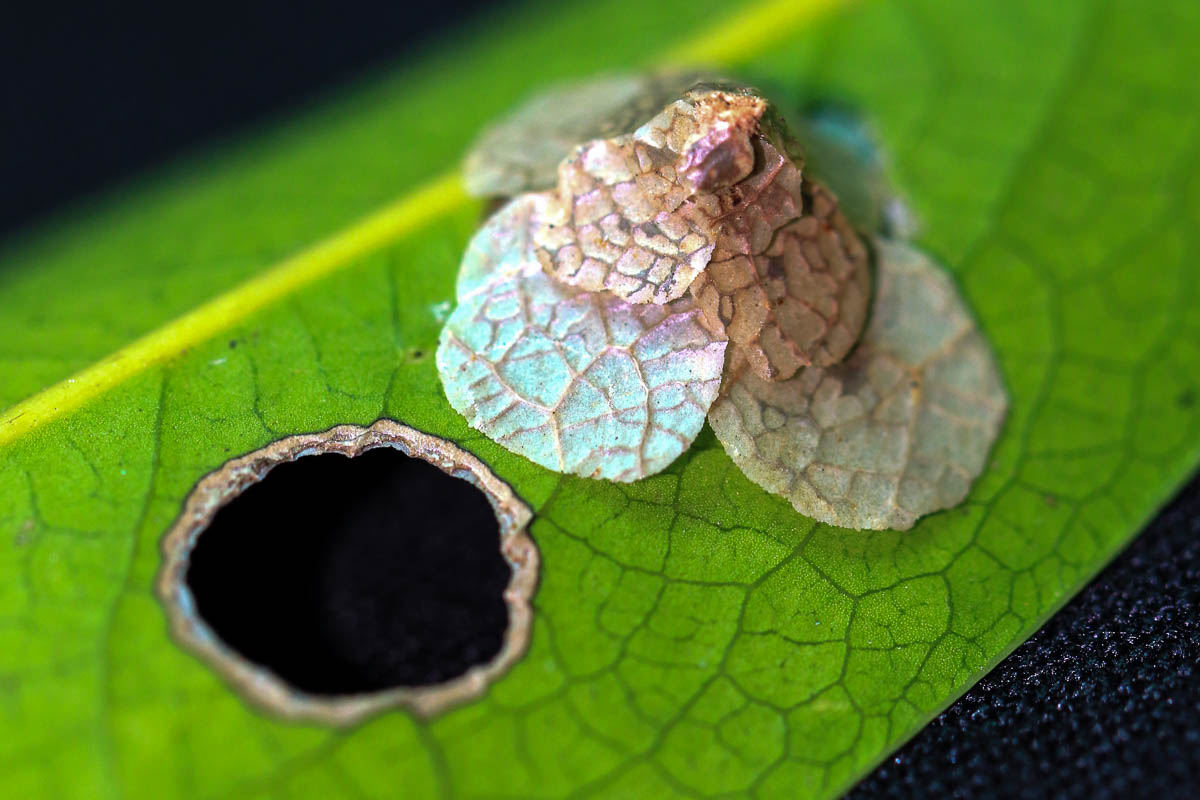Caterpillars
Caterpillars (Lepidoptera sp.)
%20-%20caterpillar%20-%20ppn%205victorialim.jpg)
Caterpillars are the larvae of moths and butterflies and feed heavily on leaves, either in groups or individually.
They come in many different forms, colours, and sizes, with some even sporting stinging hairs to deter predators!
Certain species of caterpillars will only feed on specific plants. For example, Lime butterfly caterpillars will only feed on plants from the citrus family, like Lime and Limau Purut, and cabbage white caterpillars will feed on plants from the Brassica genus like Cai Xin, Kai Lan and Xiao Bai Cai. These are called host plants and can be used to attract more butterflies into your garden.
Symptoms
.jpg)
Affected leaves can become skeletonised by the caterpillars, which are voracious feeders in their last stage.
victorialim.jpg)
Small faecal pellets can be found in large numbers near leaves that have been eaten.

Rolled up leaves or small pieces of bark bound together with silk might have a caterpillar inside!
Preventive and control measures:
.jpg)
The best way to manage caterpillars is to prevent them from reaching your plants in the first place. Mechanical control methods like netting up your plants with mesh will prevent butterflies from laying their eggs on your plants.
Remove caterpillars and eggs by hand as soon as they are spotted. Preschools and primary schools near you may want to adopt them!
A microbial insecticide containing the soil borne bacterium Bacillus thuringiensis kurstaki (BtK) can be applied to the infected plant. Once eaten by the caterpillar, the formulated BtK is broken down into particles that damage the guts of the caterpillar and cause death around a day.
.jpg)
Encourage predators to establish in your garden by keeping it pesticide-free. Wasps, dragonflies and birds feed on caterpillars and can keep their population under control.

